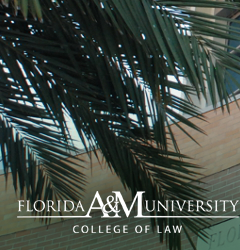Document Type
Article
Publication Date
2008
Abstract
On March 31, 2005, thirteen days after the court-ordered removal of her feeding tube, Theresa Marie Schindler Schiavo (Terri) died from dehydration. At the time of her death, Terri did not suffer from a terminal condition; if provided with nourishment, her life expectancy was at least ten years. Since February 1990, Terri had been unconscious. Terri left no living will or written directive as to her wishes. Family members vehemently disagreed as to whether Terri, raised in the Catholic faith, would have wanted her feeding tube removed. To legally end Terri's life, Florida law required the person petitioning for her death to provide "clear and convincing evidence" that Terri wished to die in order to overcome the presumption in favor of life. Terri's situation eventually received extensive media coverage, but only several years after Florida Circuit Judge, George W. Greer, had signed the February 2000 order to end her life. Even before hearing any evidence as to Terri's wishes, various judges effectively decided in favor of death by approving the use of Terri's money to fight for her death. Beginning in 1997 and before any court had legally determined Terri's wishes according to Florida law, various Florida state judges authorized Terri's husband, Michael Schiavo, to use Terri's funds to finance the death fight. These funds came from various malpractice suits filed by Michael on Terri's behalf. As a result of those suits, in November 1993, Terri's assets were valued at $761,507.50.13 Over four years later (and after four years of medical bills), in April 1998, Terri's assets were valued at $713,825; less than four years later, as of June 2001, only $350,000 remained. As of March 2005, only between $40,000 and $50,000 remained. Terri died a pauper. At the pivotal hearing of January 2000, the only actual evidence of Terri's wishes consisted of casual hearsay statements made by Terri to various family members and a friend of Terri's from the 1980s. Faced with a lack of hard evidence, the trial court relied on "expert" testimony as to how Americans in general feel about death. The trial court even heard the testimony of a priest, who had never met Terri, to establish the extent of Terri's Catholic faith and the Church's position on withholding nutrition from an incompetent. Subsequently and inevitably, on February 11, 2000, Judge Greer issued his order sealing Terri's fate ("Death Order"). The State of Florida failed Terri yet again when its appellate courts allowed these errors to stand. Appellate review was limited in the early, crucial years of the battle for Terri's life. Terri's parents appealed the Death Order, which contained critical factual findings, to the Second District Court of Appeal. With little discussion, the court affirmed that part of the order determining Terri's wishes and, remarkably, the Florida Supreme Court refused to even review that decision. With little deliberation and amazing speed, the federal courts offered no further protection. The media also failed Terri on a grand scale, by neglecting to accurately report the facts of Terri's case or to identify and analyze the applicable law. The media conducted faulty and legally irrelevant polls showing that most Americans thought Terri should die. As one commentator concluded, "media malpractice" was committed in regard to the Schiavo case. This same media was noticeably missing in the early years of the battle over Terri's life-the key years. With the exception of the St. Petersburg Times and the Orlando Sentinel, the media did not report on the battle for Terri's life, which began in 1993, until many years later. In those early years, however, forces were put in motion that ultimately sealed Terri's fate. Due to the lack of media coverage of these early events, the public was kept ignorant of these crucial, earlier forces. The media never investigated these earlier forces or questioned the factual findings determined in the early proceedings. Why did the courts allow Terri's money to be spent to fight for her death and not for her life? Why did the courts fail to appoint an attorney for Terri? Why on the basis of such questionable evidence did the courts authorize the killing of Terri? Why did most members of the media support Terri's killing and sway the public to also support the killing? This article posits that fear and prejudice, combined with the use of Terri's monies to fight for her death and the lack of independent legal representation, inexorably caused her death. The judicial system failed to follow the rule of law. The media failed to fully report the facts. The public failed to understand the facts and the law. Does any of this matter? After all, Terri is dead. Nothing can bring her back. But it still matters. It matters because under Florida law the real issue is what Terri would have wanted, not what any of the rest of us might have wanted in her situation, and certainly not what any of us fear might happen to us. It matters because we are still alive, and any of us could find ourselves in Terri's situation. We deserve decisions based on the rule of law, not based on which side is better funded, not based on the fear of "living like that," not based on a prejudice against those who do. Fortunately, by implementing a few modest proposals, we can ensure that the rule of law prevails in the future, even if it did not do so for Terri.
Recommended Citation
Priscilla Norwood Harris, Money, Fear and Prejudice: Why the Courts Killed Terri Schiavo, 30 WOMEN's Rts. L. REP. 42 (2008).
